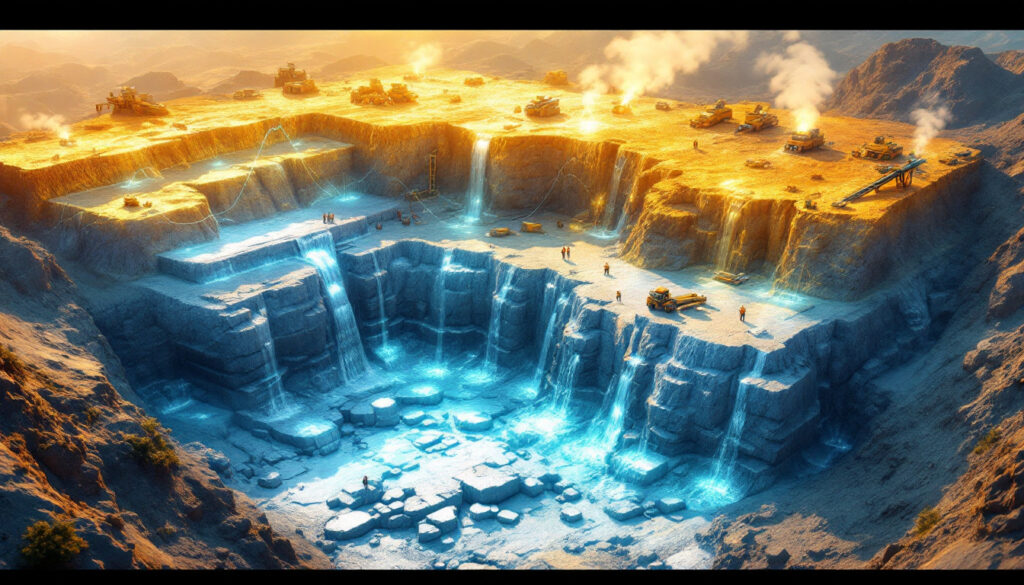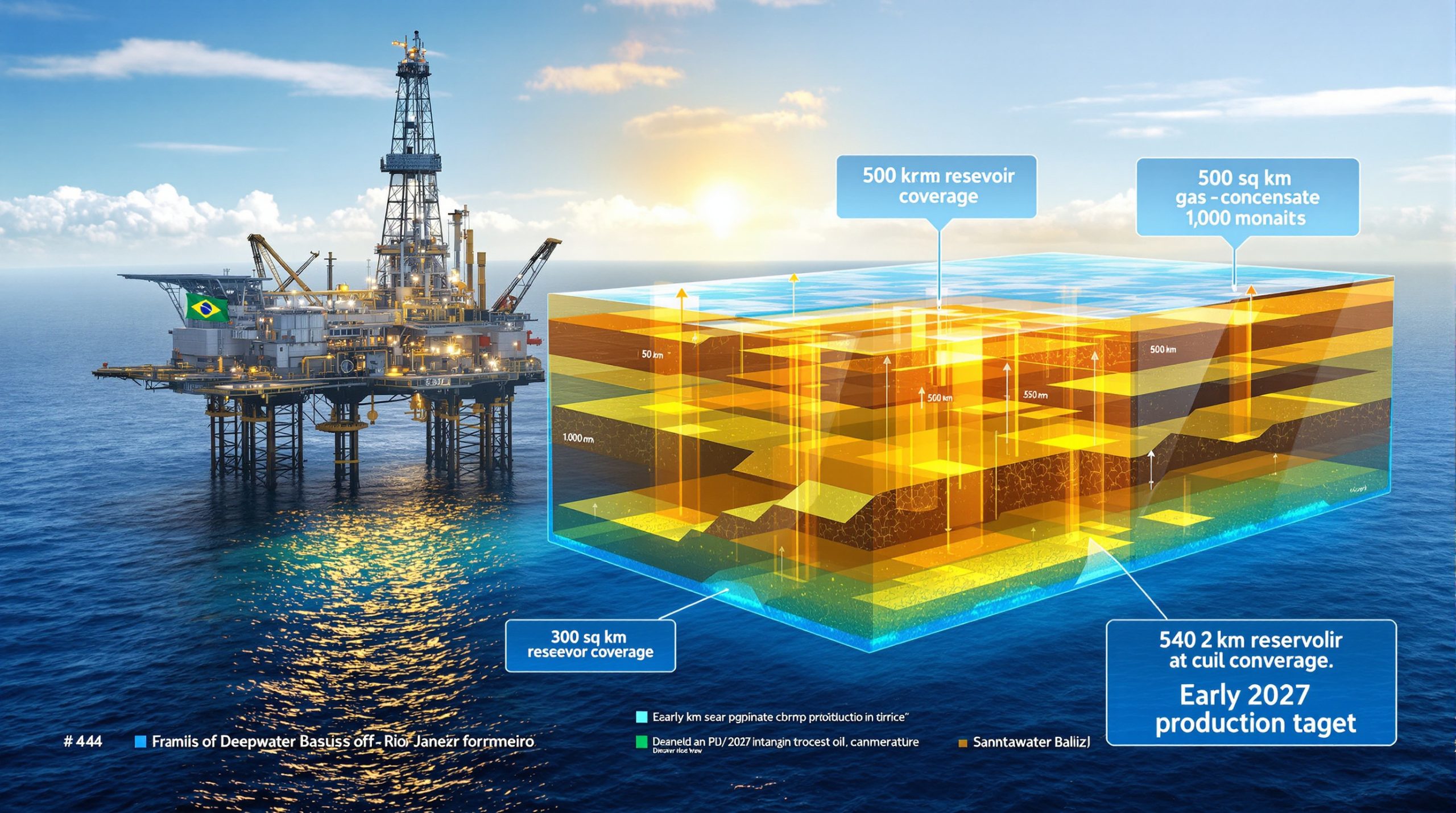Understanding Mineral Deposit Tiers: A Comprehensive Guide
Mineral deposit tier classification serves as a foundation for investment decision-making in the global mining industry. These classifications help stakeholders evaluate the economic potential of various projects, manage risk, and allocate capital efficiently. This comprehensive guide explores the nuances of deposit tiers, from the elite Tier 1 deposits to the challenging economics of Tier 4 projects.
What Are Deposit Tiers in Mining?
Deposit tiers represent classification systems used in the mining industry to categorize mineral deposits based on their economic viability, size, and production potential. These standardized frameworks help investors, geologists, and mining professionals assess risk and potential returns in resource investments.
The tiering system provides a common language for the mining industry, allowing stakeholders to quickly understand a project's relative standing among global resources. Tier classifications reflect not just geological characteristics but also economic parameters that determine long-term viability.
The Importance of Deposit Classification
Classification systems provide a standardized framework for evaluating mining projects across different commodities and jurisdictions. This standardization is critical for comparing diverse projects on a global scale.
Investors rely on tier classifications to make informed decisions about resource investments, with different tiers representing distinct risk-return profiles. Higher-tier deposits generally command premium valuations in the market, reflecting their superior economics and reduced operational risk.
Mining companies use tier classifications to prioritize development projects in their portfolio, focusing capital expenditure on assets with the greatest potential returns.
The classification system also assists in the valuation of mining assets and companies, providing a baseline for comparison in mergers, acquisitions, and investment decisions.
How Are Deposit Tiers Determined?
Deposit tiers are determined through comprehensive economic evaluation of ore deposits and geological assessment, considering multiple factors that impact a deposit's commercial viability. This process involves rigorous financial modeling, geological interpretation, and risk assessment.
The determination of a deposit's tier status is not static but evolves with changing market conditions, technological advancements, and additional resource delineation. A deposit classified as Tier 2 today could potentially become Tier 1 with expanded reserves or improved extraction economics.
Key Metrics Used in Classification
Net Present Value (NPV) at the Decision-to-Build Stage serves as the primary financial metric, capturing the time value of money and project risk. This calculation considers capital costs, operating expenses, commodity prices, and production profiles.
Position on the cost curve relative to competitors determines a project's resilience during price downturns. Lower-cost producers maintain profitability when higher-cost operations struggle.
Annual revenue generation potential indicates the scale of operations and cash flow expectations. Larger, consistent revenue streams typically correlate with higher-tier classifications.
Mine life expectancy reflects the sustainability of operations, with longer-lived assets generally receiving higher-tier status due to their extended earnings horizon.
Expansion potential assesses whether a deposit can grow beyond its initial parameters, either through resource additions or operational improvements.
Economic resilience during market downturns measures a project's ability to remain profitable when commodity prices fall, a critical factor in tier determination.
The Role of Economic Cycles
Higher-tier deposits maintain profitability throughout economic cycles, including during commodity price troughs. This resilience makes them attractive long-term investments regardless of market timing.
Lower-tier deposits may only achieve profitability during commodity price peaks, making them more speculative investments sensitive to market timing.
Market conditions can influence a deposit's tier classification over time, with sustained price changes potentially moving deposits between categories as their economic fundamentals shift.
What Is a Tier 1 Deposit?
Tier 1 deposits represent the pinnacle of mineral resources, characterized by exceptional economic performance and longevity. These elite assets form the backbone of major mining companies' portfolios and drive industry valuations.
Only about 5-10% of global mineral deposits achieve Tier 1 status, highlighting their rarity and significance. These premium assets often become household names within the mining industry due to their outsized importance and multi-generational operating horizons.
Characteristics of Tier 1 Deposits
Risk-adjusted NPV exceeding US$1 billion at the Decision-to-Build Stage places these deposits among the most valuable mining assets globally. This threshold ensures only exceptional projects achieve Tier 1 status.
The average estimated value of approximately US$2 billion reflects the substantial scale of these operations and their significance to corporate portfolios.
Consistent annual revenues of $200-600 million (depending on commodity price trends) generate substantial free cash flow throughout market cycles.
Position in the bottom quartile of the cost curve ensures profitability even when commodity prices fall significantly below long-term averages.
Profitability during adverse market conditions demonstrates resilience against external shocks, protecting investors during downturns.
Substantial scale and high-quality resources provide operational flexibility and efficiency advantages over smaller deposits.
Significant expansion potential allows these projects to grow over time, often evolving into mining districts rather than isolated operations.
Notable Tier 1 Examples
Olympic Dam in South Australia represents one of the world's most significant polymetallic deposits, containing copper, gold, silver, and uranium. Its massive resource base and multi-decade mine life exemplify Tier 1 characteristics.
Broken Hill, one of Australia's most iconic mining operations, has produced lead, zinc, and silver continuously since the late 19th century, demonstrating the multi-generational nature of true Tier 1 assets.
Cadia East, operated by Newcrest Mining, stands as one of the world's largest gold-copper porphyry deposits, with projected operations extending beyond 2050 and industry-leading production costs.
What Is a Tier 2 Deposit?
Tier 2 deposits represent substantial resources that fall just below the elite Tier 1 category but still offer attractive investment opportunities. These projects form the operational core of many mid-tier mining companies and serve as important assets for major producers.
While not matching the exceptional economics of Tier 1 deposits, Tier 2 projects still provide compelling returns and often operate successfully for decades. They typically constitute about 15-20% of global mineral deposits, making them more common than Tier 1 but still relatively scarce.
Characteristics of Tier 2 Deposits
Risk-adjusted NPV between US$200-1000 million at the Decision-to-Build Stage represents significant value creation potential while falling short of Tier 1 thresholds.
The weighted average value of approximately $500 million reflects substantial but not exceptional economic potential compared to elite Tier 1 projects.
Economically viable under most market scenarios, these deposits generate positive returns across typical commodity price ranges but may struggle during severe downturns.
These deposits may face challenges during significant economic downturns when commodity prices fall well below historical averages.
Moderate size and shorter lifespan compared to Tier 1 assets typically translate to 10-20 year operations rather than multi-generational mines.
Limited expansion potential constrains long-term growth opportunities compared to Tier 1 deposits, which often expand substantially beyond initial parameters.
Some Tier 2 deposits possess potential to be upgraded to Tier 1 through additional delineation, technological innovation, or improved economics from infrastructure development.
Notable Tier 2 Examples
Prominent Hill in South Australia operates as a copper-gold mine with solid economics and a moderate mine life, exemplifying the characteristics of a quality Tier 2 asset.
North Parkes copper-gold operation in New South Wales demonstrates the stable, profitable nature of well-managed Tier 2 deposits within established mining regions.
What Is a Tier 3 Deposit?
Tier 3 deposits occupy the lower echelons of economically viable resources, often serving as auxiliary operations rather than standalone projects. These deposits typically have marginal economics that become attractive only under specific conditions or when developed in conjunction with larger operations.
These projects represent approximately 30-40% of global mineral deposits and often form the project pipeline for junior mining companies. While challenging as standalone investments, they can provide value when incorporated into broader operational strategies.
Characteristics of Tier 3 Deposits
Risk-adjusted NPV between US$50-200 million at the Decision-to-Build Stage indicates limited standalone economic potential compared to higher-tier deposits.
The average estimated value of approximately $80 million reflects the marginal economics that characterize this tier category.
Profitable primarily during peak economic cycles, these deposits generate positive returns mainly when commodity prices rise significantly above long-term averages.
Often dependent on larger mines for economic viability, Tier 3 deposits frequently benefit from shared infrastructure, processing facilities, or administrative functions.
These deposits typically materialize as auxiliary operations supporting larger mining complexes rather than independent mines.
Limited standalone economic potential constrains their attractiveness as primary investment targets for major mining companies.
Notable Tier 3 Examples
Hillside copper project in South Australia represents a marginal development prospect that requires favorable copper prices to achieve economic viability.
Honeymoon uranium project demonstrates the challenges of Tier 3 economics, with operations suspended during uranium price downturns and reactivated when market conditions improve.
What Is a Tier 4 Deposit?
Tier 4 deposits represent the highest-risk category, characterized by persistent unprofitability and significant economic challenges. These projects typically remain undeveloped except under exceptional circumstances such as extreme commodity price spikes or transformative technological breakthroughs.
Making up roughly 40-50% of known mineral occurrences, Tier 4 deposits illustrate the challenging reality of resource development – most discoveries never achieve economic viability. These projects often remain conceptual or experience multiple failed development attempts.
Characteristics of Tier 4 Deposits
Consistently negative Net Present Value (NPV) indicates fundamental economic challenges that prevent viable development under normal market conditions.
Unprofitable even during favorable market conditions, these deposits face structural issues beyond cyclical commodity prices.
Unlikely candidates for development by established mining companies, Tier 4 deposits typically remain in the hands of speculative junior companies or languish undeveloped.
A notional value of approximately $50 million for economic evaluation reflects their minimal contribution to corporate valuations.
Marginal possibility of future development exists contingent on substantial price increases or technological advancements that fundamentally change project economics.
Notable Tier 4 Examples
Lochiel lignite coal project illustrates the economic challenges of developing low-quality resources in regions with high operating costs and limited infrastructure.
How Do Deposit Tiers Impact Investment Decisions?
The tier classification of a mineral deposit significantly influences investment strategies and valuation approaches in the mining sector. Understanding these implications helps investors align their risk tolerance with appropriate mining feasibility studies for deposit valuation.
Institutional investors typically concentrate capital in companies with Tier 1 and strong Tier 2 assets, while retail investors and specialized funds may pursue higher-risk opportunities in lower-tier projects with greater upside potential.
Investment Implications by Tier
Tier 1 deposits command premium valuations, present lower risk profiles, and support long-term investment horizons. Major mining companies prioritize these assets as portfolio cornerstones.
Tier 2 deposits offer attractive valuations with moderate risk and typically support medium to long-term investment horizons. They often represent the operational core for mid-tier producers.
Tier 3 deposits present speculative valuation opportunities with higher risk profiles and usually shorter investment horizons. These projects frequently require specific catalysts to achieve development.
Tier 4 deposits represent highly speculative investments with the highest risk profiles and are generally avoided by mainstream investors. They typically attract specialized risk capital from investors seeking transformational returns.
Risk-Return Profile Across Tiers
Higher-tier deposits offer more predictable returns with lower risk, providing stability but limited upside potential beyond projected economics.
Lower-tier deposits may offer higher potential returns but with substantially increased risk of project failure or underperformance.
Diversification across tiers can optimize portfolio performance, balancing the stability of higher-tier assets with the growth potential of lower-tier projects.
How Can Deposits Move Between Tiers?
Mineral deposits are not permanently fixed in their tier classification and can move between categories based on various factors. This dynamic nature creates opportunities for value creation through strategic development approaches.
Historical examples show significant movement between tiers, particularly from lower to higher classifications, as geological understanding of mining drilling results improves or external factors change. This potential for reclassification drives exploration and development strategies for many mining companies.
Factors That Can Change Tier Classification
Additional resource delineation expanding known reserves can transform project economics by increasing scale or extending mine life.
Technological advancements improving extraction economics might reduce costs or increase recoveries, enhancing project viability.
Commodity price changes affecting project economics can elevate or downgrade deposits as revenue projections shift with market conditions.
Infrastructure development reducing capital or operating costs improves project economics through reduced transportation expenses or energy costs.
Regulatory changes impacting development potential can either enable or restrict project advancement, affecting economic viability.
FAQs About Mineral Deposit Tiers
What is the difference between a resource and a reserve in mining?
A resource refers to the total amount of minerals in a deposit, while a reserve represents the economically extractable portion under current conditions. Tier classifications typically consider the reserve portion rather than the total resource, as only reserves contribute to economic viability calculations.
Resources convert to reserves through detailed technical and economic studies that demonstrate extraction feasibility. This conversion process often reveals that only a portion of the total resource can be economically mined, affecting tier classification.
Can a deposit change its tier classification over time?
Yes, deposits can move between tiers as additional exploration reveals more resources, extraction technologies improve, or market conditions change. Some Tier 2 deposits have historically been upgraded to Tier 1 through these factors.
Downgrading also occurs when challenges emerge during development or operation, such as unexpected geological complexities or processing difficulties that impact project economics.
How do deposit tiers relate to mining company valuations?
Mining companies with higher-tier deposits typically command premium valuations due to their more predictable cash flows, longer mine lives, and lower operational risks. Companies focused on lower-tier deposits often trade at discounts reflecting their higher risk profiles.
Valuation multiples frequently correlate with tier classifications, with Tier 1-focused companies trading at higher EV/EBITDA or P/NAV ratios compared to peers operating lower-tier assets.
Are deposit tiers standardized across the global mining industry?
While the concept of tiered classification is widely recognized, specific definitions can vary between companies, analysts, and jurisdictions. The framework presented here represents a commonly accepted approach used by many mining professionals and investors, as outlined by Minex Consulting.
Some companies develop proprietary classification systems that incorporate additional factors relevant to their specific operational strategy or commodity focus.
Examining Deposit Tiers: The Strategic Importance of Understanding Tier Sizes
Understanding mineral deposit tiers provides a crucial framework for evaluating mining investments and project potential. From the elite Tier 1 deposits that represent the apex of the industry to the challenging economics of Tier 4 projects, each category offers distinct risk-reward profiles that inform investment decisions.
The tiering system enables stakeholders to quickly assess a deposit's relative standing within the global resource landscape, facilitating more efficient capital allocation and strategic planning. This standardized approach cuts through technical complexity to focus on economic fundamentals.
For investors, geologists, mining professionals, and fund managers, this tiered approach offers valuable insights into the relative value and potential of different mineral deposits. By recognizing where a project sits within this hierarchy, stakeholders can make more informed decisions about capital allocation, development priorities, and strategies for junior mining investments in the complex and dynamic resource sector.
The deposit tier explanation provides an essential tool for navigating the mining industry's inherent uncertainties, balancing geological potential against economic realities. Furthermore, understanding the JORC Code alongside tier classifications gives investors a comprehensive framework for evaluating opportunities across diverse commodities and jurisdictions.
Want to Spot the Next Tier 1 Mineral Discovery?
Stay ahead of the market with Discovery Alert's proprietary Discovery IQ model, which instantly notifies subscribers of significant ASX mineral discoveries that could evolve from promising Tier 3 deposits to valuable Tier 1 assets. Explore historic returns from major discoveries at our dedicated discoveries page and begin your 30-day free trial today.




